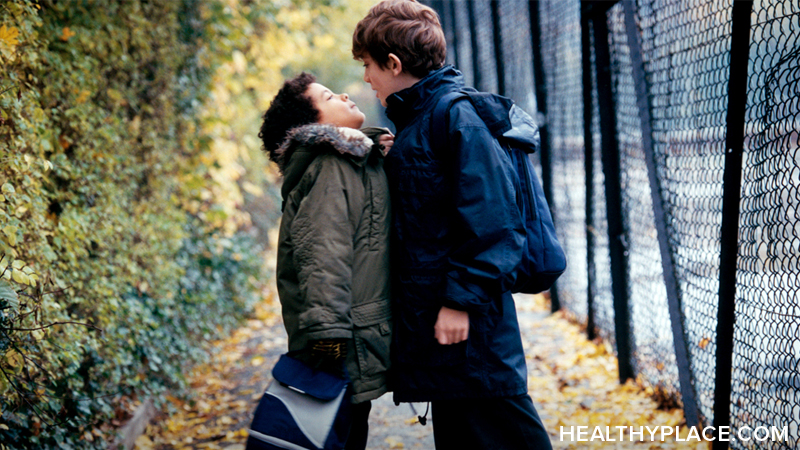Bullying in the Workplace

A workplace bully may be your boss or your co-worker. Unlike playground bullies who often resort to using their fists, workplace bullies generally use words and actions to intimidate their victims.
Characteristics of Companies with Bullying Problems
High rates of:
- sick leave
- dismissals
- disciplinary suspensions
- early and health-related retirements
- disciplinary procedures
- grievance procedures
- stress-related illnesses
This company may be more likely to hire security agencies to gather data on employees.
Types of Workplace Bully
Adapted from www.successunlimited.co.uk
Stressed, impulsive or unintentional bully
Occurs when someone is under stress or an institution is undergoing confusing, disorienting changes. This is the easiest to redirect.
Cyberbully
This includes hateful emails and cyberstalking. Some feel that employers who monitor employees' email are using intimidation but this position can be debated. If it is used unfairly, it can be seen as intimidation.
Subordinate bully
Bullying perpetrated by subordinates (such as boss being bullied by an employee, nursing staff being bullied by a patient.)
Serial bully
An individual who repeatedly intimidates or harasses one individual after another. A victim is selected and bullied for an extended period of time until he leaves or asserts himself and goes to Human Resources (HR). The bully deceives HR by being charming while the victim appears emotional and angry. Since there are often no witnesses, HR accepts the account of the senior staff member, possibly a serial bully. The bully may convince the organization to get rid of the troublesome victim. Once the victim is out of the organization, the bully usually needs to find a new victim. This is because the bully needs someone on whom he can project his inner feelings of inadequacy. The bully may prevent others from sharing negative information about him by sowing conflict. If the organization eventually realizes that it has made a mistake, it is difficult for them to publicly admit this. To do so might make them legally liable.
Secondary bully
Others in the office or social group start to react to bullying by imitating or joining in on the behavior. This can lead to institutional bullying. Even if the primary bullying individual is removed, the secondary bullies may fill in the gap because they have learned that this is how to survive in this organization.
Pair bullies
Two individuals, sometimes people who are having an affair, collude to intimidate others. The participation of the second individual may be covert.
Gang bullies
The primary bully gathers a number of followers. He may be a loud, highly visible leader. If he is a quieter sort, his role may be more insidious. Some members of the group may actively enjoy being part of the bullying. They like the reflected power of the primary bully. If the primary bully leaves the organization, and the institution does not change, one of these individuals may step in to fill the shoes of the primary bully. Others of the gang join in because they feel coerced. They fear that if they do not participate, they will be the next victims. Indeed some of these individuals do become victims at some point in time.
Dealing with Bullies in the Workplace
These are interventions for dealing with bullies in the workplace.
Personal (Assertiveness)
Confrontations between employees, HR interventions, social disputes take up a lot of energy and distract everyone from things they should be doing at work and at home. It is better to prevent an incident than to deal with it later. Sometimes this is a matter of judgment for the individual.
Assertiveness, humor, and negotiation can often head off a confrontation and prevent further bullying behavior. A strong positive self-image can help by making it easier to ignore minor insults. The positive self-image can also make it easier for one to take action when the bullying has gone too far. Cultural misunderstandings combined with personal insecurity can lead to hurt feelings.
Institutional
Institutions can make intimidation less likely by instituting policies discouraging bullying behavior. Supervisors need help with learning sensitive ways to interact with employees. Sometimes it may be as simple as cultural sensitivity and remembering to ask employees for feedback. Other times, particular individuals may need ongoing supervision or removal. It is difficult to change old habits. Explicit directives with examples may help. Managers need to understand their management style and how subordinates perceive it. It is important to understand the line between tough but fair and imperious and capricious.
Bullying and social stability
One might look at adult bullying as a mechanism of social control. Employers, government officials, and others in authority wish to retain and increase their control and authority. If power and control are central to the existence of an organization, bullying, and denial about the existence of bullying may be central to the stability of the organization.
Rules, regulations and clear lines of authority are not the same as institutional bullying. Let's take a person who grew up in a family where there was covert intimidation, inconsistent demands, and unfair treatment. His parents might single him out for harsher treatment than his siblings but make him feel too guilty to speak out. Paradoxically enough, such an individual might experience a strong sense of relief after joining the military. He would experience more overt yelling and more minute-to-minute control of his activities. Yet he thrives. Why? In the armed forces, he would report that he received fair and consistent treatment. The rules were predictable. The expectations were rigorous but clear and predictable. His superiors shouted at him, but they shouted at everyone else. Some superiors might be excessively harsh, but everyone knew who they were and knew what to expect.
Intense, highly authoritarian situations sometimes lend themselves to bullying situations. However, this is not always the case. If there are consistent predictable rules and no one is unfairly singled out, hierarchy does not necessarily mean bullying. In strict hierarchical situations, there should always be an avenue for individuals who feel that they are being treated unfairly or being asked to do unethical things.
About the author: Dr. Watkins is Board Certified in Child, Adolescent & Adult Psychiatry
APA Reference
Staff, H.
(2021, December 17). Bullying in the Workplace, HealthyPlace. Retrieved
on 2025, October 29 from https://www.healthyplace.com/abuse/bullies/bullying-in-workplace-workplace-bullies








